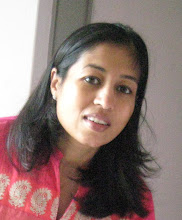New Delhi is the capital city of the Republic of India and the seat of the government of National Capital Territory of Delhi. The city was destroyed and built seven times. Delhi is one of Indias fastest growing cities. The city has two distinct parts, New Delhi and Old Delhi. The streets of the city are narrow and bustling. It has some of the finest museums in the country.
You can buy almost anything in Delhi includes zardozi, embroidery made with gold and silver thread and attar, an essential oil made with flowers and herbs. You are expected to bargain hard.
The best markets for hand spun cotton clothes, are South Extension I & II and Greater Kailash and are the hot spots for designer as well as Western chain brand names. Bengali Market, is especially renowned for its sweet shops and large bustling cafescafs. The markets of Old Delhi do not take credit cards but most shops in New Delhi take cards.
It is notoriously difficult to obtain an alcohol licence and many of the watering holes and nightclubs are in the five star international hotels with the prices to match. Wine in is very expensive and frequently of indifferent quality those who wish to drink would be well advised to stick to spirits, beer or cocktails. You still have to look hard for bars and clubs even though there are multiplying.
The licensing laws have been relaxed and the young are making up ground, drinking not just beer and spirits but adventurous cocktails. It is still quite expensive one drink can cost more than a night in a budget hotel.
The India Gate is one of the impressive structures built in Delhi, with lush green lawns in the backdrop. This historic monument was built as a memorial to commemorate the 90,000 Indian soldiers killed in the first world war. This monument was designed by Sir Edwin Lutyens. The construction was completed in 1931 A.D.
The magnificent Rashtrapati Bhawan, can be located on the Rajpath road. The gate is 160 feet high with an arch of 138 feet. The monument was dedicated to the nation by the then Viceroy, Lord Irwin. Rashtrapati Bhawan is the official residence of the President of India. A portion of the building houses the Presidents Secretariat. The Durbar Hall is used to conduct such state functions as the swearing in of the Prime Minister and his Council of Ministers and presentation of military and civilian honours.
You can buy almost anything in Delhi includes zardozi, embroidery made with gold and silver thread and attar, an essential oil made with flowers and herbs. You are expected to bargain hard.
The best markets for hand spun cotton clothes, are South Extension I & II and Greater Kailash and are the hot spots for designer as well as Western chain brand names. Bengali Market, is especially renowned for its sweet shops and large bustling cafescafs. The markets of Old Delhi do not take credit cards but most shops in New Delhi take cards.
It is notoriously difficult to obtain an alcohol licence and many of the watering holes and nightclubs are in the five star international hotels with the prices to match. Wine in is very expensive and frequently of indifferent quality those who wish to drink would be well advised to stick to spirits, beer or cocktails. You still have to look hard for bars and clubs even though there are multiplying.
The licensing laws have been relaxed and the young are making up ground, drinking not just beer and spirits but adventurous cocktails. It is still quite expensive one drink can cost more than a night in a budget hotel.
The India Gate is one of the impressive structures built in Delhi, with lush green lawns in the backdrop. This historic monument was built as a memorial to commemorate the 90,000 Indian soldiers killed in the first world war. This monument was designed by Sir Edwin Lutyens. The construction was completed in 1931 A.D.
The magnificent Rashtrapati Bhawan, can be located on the Rajpath road. The gate is 160 feet high with an arch of 138 feet. The monument was dedicated to the nation by the then Viceroy, Lord Irwin. Rashtrapati Bhawan is the official residence of the President of India. A portion of the building houses the Presidents Secretariat. The Durbar Hall is used to conduct such state functions as the swearing in of the Prime Minister and his Council of Ministers and presentation of military and civilian honours.


No comments:
Post a Comment